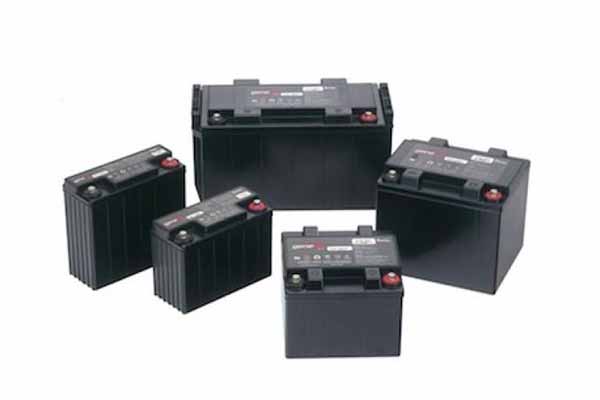A lead-acid battery is one of the oldest chemical systems allowing electrical energy storage. This type of battery is mostly preferred because of its low cost, simple and well-known technological process, low self-discharge, long operation in floating charge conditions, and effective recycling. New age batteries such as nickel-based and lithium-ion cost twice or even more than the lead-acid batteries. The typical life span of a lead acid battery is around 300 cycle or two to three years in an environment of 15 to 25 C temperature.
Carbon black is used as a capacitor in lead-acid batteries to store energy in its electrical double layer. Over the past few years, the production of carbon black has increased to a large extent. Carbon black is very versatile with a large array of forms, hence it is very popular in the application of lead-acid battery. Carbon black is created when fossil fuels like natural gas, coal, and oil are partially burned. The three main types of carbon black are lamp black, furnace black, and gas black. The most typical form of carbon black is furnace black. It has a low cost, high electrical conductivity, large specific surface area, and low environmental impact.
Moreover, carbon black is widely used as an additive to the negative active mass in lead-acid batteries to improve its electrochemical properties. It extensively enhances the life cycle of batteries and significantly increase the durability and the number of battery discharge/charge cycles, thereby allowing the lead-acid battery to become competitive in relation to other kinds of electrochemical power sources.
According to a report published by Allied Market Research, the global carbon black in lead-acid battery market size is anticipated to reach $591.4 million with a considerable CAGR from 2020 to 2027. The Asia-Pacific region is currently holding the highest market share and is also expected to witness the fastest growth rate during the forecasted period. The growing sustainability goals across the globe is one of the major factors boosting the growth of the market.
In addition, numerous factors such as the surge in demand for cost-efficient energy storage solution, the high demand for lead-acid batteries in the automotive sector, rise in automotive sales, and increase in demand for UPS systems in residential and commercial sectors are driving the growth of the global carbon black in lead-acid battery market. Most of the batteries used in cars are lead-acid batteries. Due to its excellent performance in specific applications, including UPS systems and ignition power sources for cars, carbon black is being used extensively in lead-acid batteries.
With this drift on board, the key market players are making huge investments on R&D activities with an aim to improve the performance of carbon black in lead-acid battery technology compared to other battery technologies, such as lithium-ion batteries. For instance, Birla Carbon has developed a wide portfolio of performance conductive additives that are designed to improve the power density, energy density, and charging speed of lead-acid batteries.
Meanwhile, Amara Raja Batteries is planning to invest more than USD 1 billion in CAPEX for both organic and inorganic development over the next five to seven years. The battery manufacturers are focusing more on advanced energy storage technologies like lithium-ion technology in accordance with the market trends. Such initiatives by the market players are increasing the use of carbon black lead-acid batteries in the automobile sector, thereby augmenting the growth of the market to a great extent.
However, the outbreak of the COVID-19 pandemic led to have a negative impact on the growth of the global carbon black in lead-acid battery market. Due to the implementation of the stringent lockdown in many countries across the globe, several sectors were forced to shut down their operations. Owing to the temporary closure of manufacturing activities, the production of lead-acid batteries was reduced to a significant level.
Not only the production but also the demand for lead-acid batteries from the end use industries was decreased. The economic slowdown affected the development of new projects worldwide. Attributed to factors such as social distancing norms, closed borders and import-export restrictions, disruptions in the supply chain, unavailability of raw materials, shortage of labor force, and decline in demand for passenger vehicles, automotive manufacturers had to halt their production activities. This in turn, decreased the demand for lead-acid batteries which eventually reduced the demand for carbon black additive from battery manufacturers during the pandemic.
Nevertheless, the market has already recovered in the post pandemic, owing to a considerable surge in e-bikes across several nations. E-bikes are considered a convenient, safe, and affordable alternative to public transportation. At the same time, e-bikes are cheaper compared to other transportation systems. They can be charged easily and do not require huge investments in supportive infrastructure. These factors are likely to boost the demand of lead-acid batteries from e-bike manufacturers, thereby fueling the demand of carbon black additives from battery manufacturers.
Furthermore, a significant growth in demand for efficient and economical power storage units across different industries & applications, including automobiles, telecommunication, residential sector, and backup energy systems are propelling the demand for lead-acid batteries in more than one way. Here, it is worth mentioning that the global carbon black in lead-acid battery market has a huge scope to gather immense growth opportunities in the years to come.

About the Author
Suchita Gupta is an explorer, musician and content writer. While pursuing MBA, she found that nothing satisfies her more than writing on miscellaneous domains. She is a writer by day, and a reader by night. Besides, she can be found entertaining her audience on social media platforms. Find her on LinkedIn & Instagram.


















